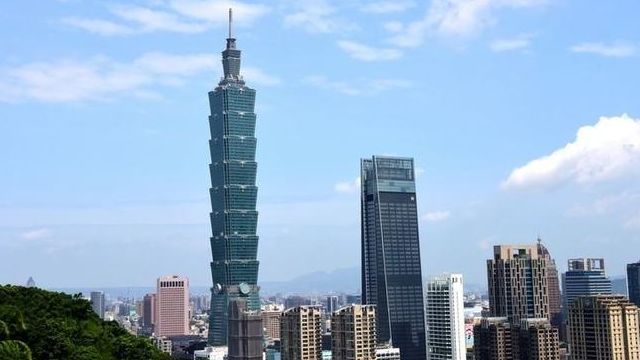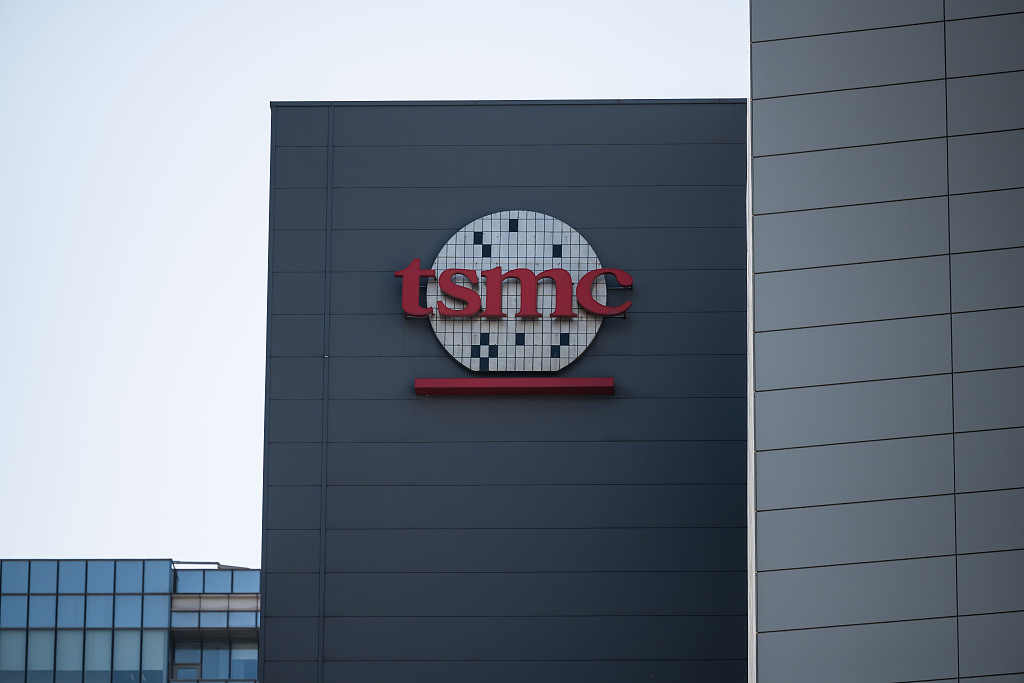
The Taipei 101 skyscraper in Taipei, China's Taiwan. /Xinhua
The Taipei 101 skyscraper in Taipei, China's Taiwan. /Xinhua
Editor's note: The article was first published on Russian newspaper website RGRU on August 11, 2022. Konstantin Schepin is the chief news commentator at CGTN Russian Department.
In a white paper on August 10, "The Taiwan Question and China's Reunification in a New Era," China outlined the "three pillars" for resolving the Taiwan question. The document emphasizes that there is already a well-developed legal and solid economic basis for resolving the Taiwan question, as well as a firm determination to confront Taiwan separatists and the external forces supporting them.
Against the backdrop of U.S. Speaker Nancy Pelosi's recent visit to Taiwan, perceived in Beijing as an attempt to flirt with separatists, the white paper is a reminder to the world of China's position on the situation.
Political pillar
It cites various documents confirming that Taiwan has been an integral part of China since ancient times. The first mention of Taiwan as a Chinese island is to be found, among others, in the Seaboard Geographic Gazetteer compiled in the year 230 by Chinese official Shen Ying. As early as the 17th century, China successfully defended its sovereignty over Taiwan by expelling Dutch colonists from the island.
In 1684, a Taiwan prefecture administration was set up under the jurisdiction of Fujian Province. In 1885, Taiwan's status was upgraded and it became the 20th province of China. The Constitution of the People's Republic of China (PRC) says: "Taiwan is part of the sacred territory of the PRC. It is the inviolable duty of all Chinese people, including our compatriots in Taiwan, to accomplish the great task of reunifying the motherland."
Taiwan's status as an integral part of China is also enshrined in many international documents. For example, the Cairo Declaration issued by China, the United States and the United Kingdom in 1943 states that "all the territories Japan has stolen from China, such as Northeast China, Taiwan and the Penghu Islands should be restored to China." This demand was also confirmed in the Potsdam Proclamation of 1945. And the China-U.S. Joint Communique on the Establishment of Diplomatic Relations published in December 1978 explicitly says: "The Government of the United States of America acknowledges the Chinese position that there is but one China and Taiwan is part of China" and that "the United States of America recognizes the Government of the People's Republic of China as the sole legal Government of China."
The same statement was repeated almost word for word by U.S. President Joe Biden just before Pelosi's visit to Taiwan. Not surprisingly, Pelosi's visit is considered to be a direct violation of the basic China-U.S. agreement and a trampling of the sovereign rights of the PRC. The paper says, "Behind the smokescreens of 'freedom, democracy, and human rights' and 'upholding the rules-based international order,' some anti-China forces in the U.S. deliberately distort the nature of the Taiwan question – which is purely an internal matter of China – and try to deny the legitimacy and justification of the Chinese government in safeguarding national sovereignty and territorial integrity. This clearly reveals their intention of using Taiwan to contain China."
The one-China principle is recognized by 181 countries, including the United States. Moreover, it is supported by Taiwan as well. In the 1992 Consensus for developing cross-strait ties, the delegations of Beijing and Taipei agreed that "there is only one China in the world."

The Taiwan Semiconductor Manufacturing Co. headquarters in Hsinchu, China's Taiwan, April 7, 2021. /CFP
The Taiwan Semiconductor Manufacturing Co. headquarters in Hsinchu, China's Taiwan, April 7, 2021. /CFP
Economic pillar
One factor for resolving the Taiwan question is the growing economic power of the Chinese mainland and the strengthening of trade and economic ties across the Taiwan Strait. The white paper says: "The overall strength and international influence of the mainland will continue to increase, and its influence over and appeal to Taiwan society will keep growing. We will have a more solid foundation for resolving the Taiwan question and greater ability to do so. This will give a significant boost to national reunification."
In 1980, the GDP of the mainland was seven times that of Taiwan; in 2021 it jumped to 22 times that of Taiwan. From 1978 to 2021, cross-strait trade increased 7,000 times. The mainland has been the largest export market for Taiwan for 21 years in a row, as well as the main destination for the island's investments. More than $71 billion of Taiwan investments has already been absorbed on the mainland. Economic integration will continue to evolve and plans were underway to establish pilot zone for integrated cross-strait development in Fujian Province.
However, after Pelosi's visit, plans for further economic integration have been put on hold. Beijing decided to remind Taiwan how important economic ties with the mainland are for the island, introducing an embargo on shipments of sand to Taiwan. This could lead to serious problems for the island's construction sector and more importantly, for the production of transistors and semiconductors, as quartz sand is the main source of silicon necessary for producing them.
If there is a growing deficit of sand, Taiwan risks a reduction in its major share in the global production of microchips for electronics. Such a "Chinese warning in action" may reduce the fervor of those "fighting" for "Taiwan independence."
Anti-separatist pillar
The white paper clearly identifies the "procedural aspect" for resolving the Taiwan question. It states that in general, China expects a peaceful resolution within the framework of "One Country, Two Systems," which would grant Taiwan a high degree of autonomy as a special administrative region of the PRC.
This was the principle used when Hong Kong returned to motherland in 1997 and Macao in 1999. Taiwan's social system and way of life will be fully respected, and the private property, religious beliefs and lawful rights and interests of the people fully protected.
However, the option of resolving the Taiwan question by force is not excluded. Force can be applied in cases of "interference of external forces or radical actions of separatist elements." In 2005, the PRC passed the Anti-Secession Law, which stipulates: "In the event that the 'Taiwan independence' secessionist forces should act under any name or by any means to cause the fact of Taiwan's secession from China, or that major incidents entailing Taiwan's secession from China should occur, or that possibilities for a peaceful reunification should be completely exhausted, the state shall employ non-peaceful means and other necessary measures to protect China's sovereignty and territorial integrity."
This principle was also reiterated by Chinese President Xi Jinping in his keynote speech on January 2, 2019, commemorating the 40th anniversary of the Message to Compatriots in Taiwan, a key cross-strait policy statement. He said, "We do not renounce the use of force and reserve the option of taking all necessary measures. This is to guard against external interference and a tiny number of separatists and their separatist activities for 'Taiwan independence'." However, he also added, "We Chinese should not fight each other."
(If you want to contribute and have specific expertise, please contact us at opinions@cgtn.com. Follow @thouse_opinions on Twitter to discover the latest commentaries in the CGTN Opinion Section.)

